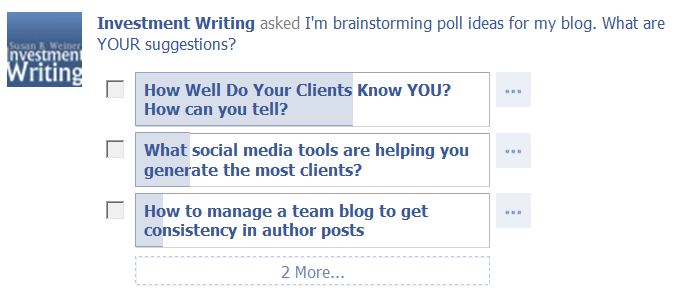You CAN edit your own writing.
First-sentence check
Here’s a tip that will help you check how well your piece is structured. Read the first sentence of every paragraph. In combination, do they give the reader a good idea of your main points? If so, you’ve written something that’s likely to survive a busy reader’s scrutiny.
This first-sentence check works because strong business writing typically starts each paragraph with a topic sentence that summarizes the paragraph’s main point or topic.
You can also incorporate the first paragraph into your quick check of your writing. When I write something longer than a blog post, I like to set up my main points in the first paragraph. This lets me convey my argument to readers who don’t have the patience to read any more.
Example: “Today’s employment report” by Cumberland Advisors
 Let’s use “Today’s employment report,” a piece of economic commentary by Cumberland Advisors in Sarasota, Florida, to test the first-sentence approach to checking your writing.
Let’s use “Today’s employment report,” a piece of economic commentary by Cumberland Advisors in Sarasota, Florida, to test the first-sentence approach to checking your writing.
Below you’ll see the first sentences of the first six paragraphs of the commentary. By the way, I’m not copying all of the first sentences because I don’t want to infringe on the firm’s copyright.
- Today’s employment report is a disappointment.
- Markets got ahead of reality; this is weak economic recovery.
- The United States faces the worst employment conditions seen during the entire Post World War II period.
- The human tragedy is large.
- If you look at the U-6 unemployment rate, you realize that 1 out of 6 in the labor force has either no income or pay that is less than it was three years ago.
- To understand the dynamic at work in the US one has to drill into the headline number.
After reading these sentences, do you have a sense of the author’s opinion on the employment report? I think so. To check the relationship between this six-sentence summary and the original commentary, go to “Today’s employment report.”
I like the commentary on the Cumberland Advisors website. It states opinions in an appealing style. I almost feel as if I’m in a conversation with the firm’s investment professionals. You can read more by visiting Cumberland’s commentary archive.
What if your writing flunks?
If your writing flunks the first-sentence test, you may simply need to tweak your content.
For example, if all but one of your first sentences work, you can zero in on the problem sentence’s paragraph of origin. Your problem may be that the topic sentence doesn’t sum up or introduce the paragraph’s main point. You can fix this by rewriting the first sentence.
Alternatively, the offending first sentence may be a sign that the entire paragraph doesn’t belong. Perhaps you’ve gone off on an unnecessary tangent. If so, you can axe the entire paragraph.
Another possibility: Your sentence and paragraph are fine, but belong higher or lower in the commentary. Move the paragraph and you may be set to go.
Image courtesy of Jonathan Baker Photography via flickr licensed under CC BY 2.0







